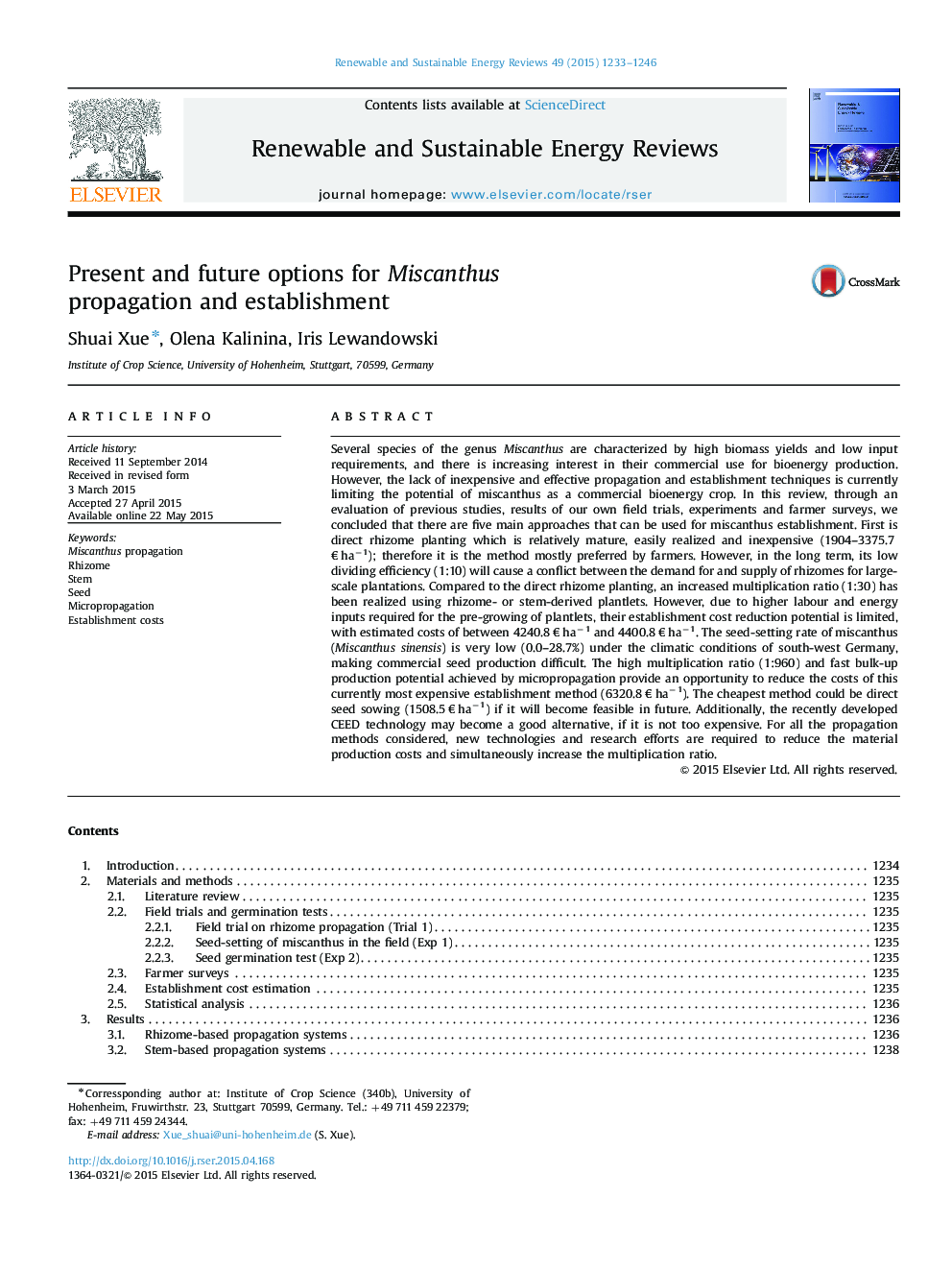| Article ID | Journal | Published Year | Pages | File Type |
|---|---|---|---|---|
| 8116988 | Renewable and Sustainable Energy Reviews | 2015 | 14 Pages |
Abstract
Several species of the genus Miscanthus are characterized by high biomass yields and low input requirements, and there is increasing interest in their commercial use for bioenergy production. However, the lack of inexpensive and effective propagation and establishment techniques is currently limiting the potential of miscanthus as a commercial bioenergy crop. In this review, through an evaluation of previous studies, results of our own field trials, experiments and farmer surveys, we concluded that there are five main approaches that can be used for miscanthus establishment. First is direct rhizome planting which is relatively mature, easily realized and inexpensive (1904-3375.7 â¬Â haâ1); therefore it is the method mostly preferred by farmers. However, in the long term, its low dividing efficiency (1:10) will cause a conflict between the demand for and supply of rhizomes for large-scale plantations. Compared to the direct rhizome planting, an increased multiplication ratio (1:30) has been realized using rhizome- or stem-derived plantlets. However, due to higher labour and energy inputs required for the pre-growing of plantlets, their establishment cost reduction potential is limited, with estimated costs of between 4240.8 â¬Â haâ1 and 4400.8 â¬Â haâ1. The seed-setting rate of miscanthus (Miscanthus sinensis) is very low (0.0-28.7%) under the climatic conditions of south-west Germany, making commercial seed production difficult. The high multiplication ratio (1:960) and fast bulk-up production potential achieved by micropropagation provide an opportunity to reduce the costs of this currently most expensive establishment method (6320.8 â¬Â haâ1). The cheapest method could be direct seed sowing (1508.5 â¬Â haâ1) if it will become feasible in future. Additionally, the recently developed CEED technology may become a good alternative, if it is not too expensive. For all the propagation methods considered, new technologies and research efforts are required to reduce the material production costs and simultaneously increase the multiplication ratio.
Keywords
Related Topics
Physical Sciences and Engineering
Energy
Renewable Energy, Sustainability and the Environment
Authors
Shuai Xue, Olena Kalinina, Iris Lewandowski,
